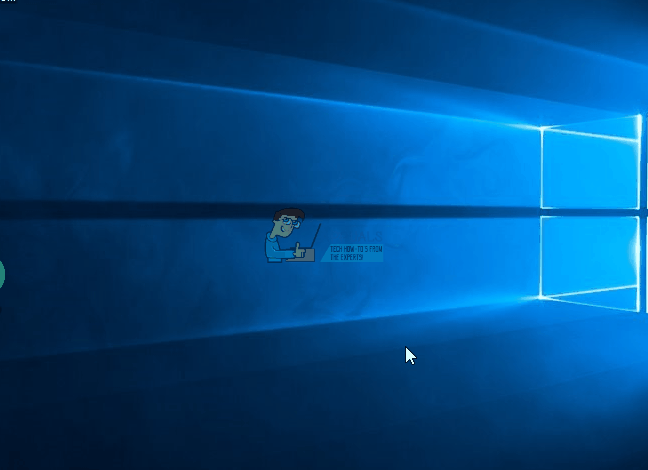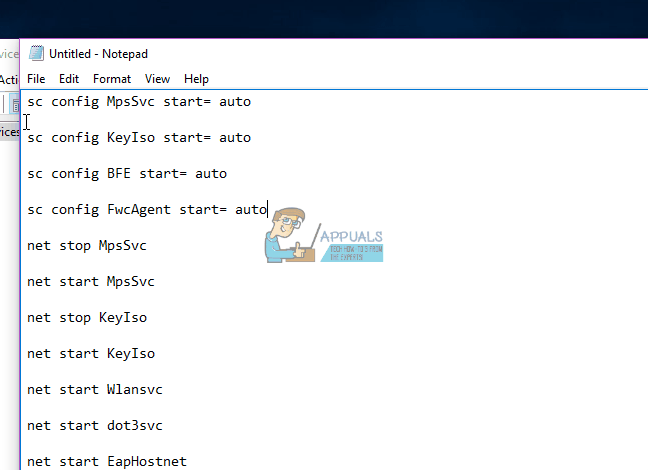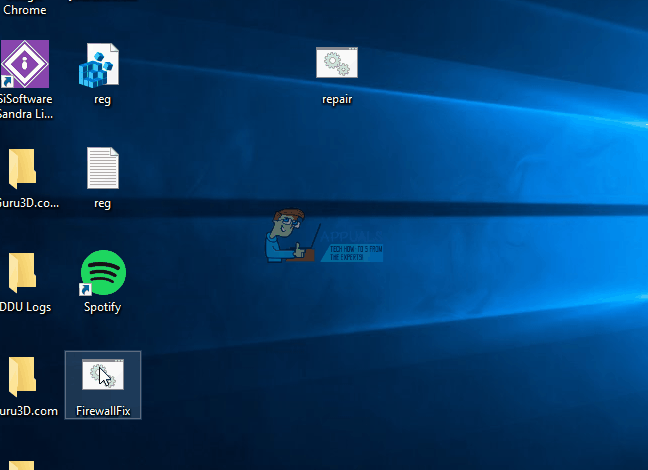FIX: Windows Firewall Error 0x8007042c
When you start Windows Firewall and encounter Error 0x8007042c – “The dependency service or group failed to start,” it is typically associated with the firewall’s inability to launch. This issue is likely due to two main reasons: either the Windows Firewall or its dependencies needed for the firewall service to start are not running, or there is present malware preventing the firewall from starting.
Also, in a few cases, having third-party firewall software can disable Windows Firewall. Uninstalling it should fix the problem instantly.
This article will provide a few fixes, which include scanning for and removing malware, and starting the Windows Firewall and its dependencies. This error applies to Windows versions from Vista through 10.

Method 1: Starting Windows Firewall Service and its Dependencies
You can start the Windows Firewall services and make sure that they start automatically in the future. Follow these steps to do this:
- Press the Windows Key and type ‘services.’ Right-click on the Services app, then select ‘Run as Administrator.’ Accept the prompt or enter your credentials when asked. You can also open Services by typing ‘cmd‘ in the start menu, opening it as an administrator, typing ‘services.msc‘, and then hitting enter.
- In the Services window, scroll until you see Windows Firewall and then double-click on it.
- Under the Startup Type option, select Automatic.
- If the Service status is Stopped, click Start.
- Click Apply and then OK.
- In the same Window, search for Base Filtering Engine and then double click it.
- Under the Startup Type option, select Automatic.
- If the Service status is Stopped, click Start.
- Click Apply and then OK.
- Restart Windows and then confirm whether Windows Firewall is enabled.

Method 2: Starting Associated Services
It could be possible that services associated with Windows Firewall are not ready. You can run the following commands in an elevated command prompt or using the steps described below.
- Press Windows Key + R and then type notepad.
Copy the following commands and paste them in the Notepad window.
sc config MpsSvc start= auto
sc config KeyIso start= auto
sc config BFE start= auto
sc config FwcAgent start= auto
net stop MpsSvc
net start MpsSvc
net stop KeyIso
net start KeyIso
net start Wlansvc
net start dot3svc
net start EapHostnet
net stop BFE
net start BFE
net start PolicyAgent
net start MpsSvc
net start IKEEXT
net start DcaSvcnet
net stop FwcAgent
net start FwcAgent
- In the Notepad window, go to File > Save As, then select ‘All Files‘ under the ‘Save as type’ field. After that, select ‘Desktop‘ on the side pane and type ‘repair.bat’ in the ‘File Name’ box. Finally, click on ‘Save‘ and close the Notepad window.
- Head over to your desktop, right click on the repair.bat file you created in Notepad and select Run as Administrator. Accept any prompts which come up your screen. If you are prompted in the command prompt window to stop a service, type Y and then Enter.
- Reboot Windows and try to enable the Firewall now.

You can also try running this script I made for an extensive repair. Right-click on the file and Run as Administrator. Follow the prompts in the command prompt window to get your firewall fixed.

Method 3: Scanning for Malware
The presence of malware can prevent your Windows Firewall from starting, as it can block the malware’s communication with the home server. Use your existing malware software to scan for and remove the malware, or follow these steps to install and use anti-malware software.
- Download Malwarebytes Anti-Malware by clicking this link.
- After downloading it, install it from the download directory.
- Go to Scan Tab > Custom Scan. Check all the boxes in the left pane and select your drives on the right pane.
- Click on Scan and then Quarantine All after the scan finishes.
Method 4: Scanning and Repairing System Files
The files related to the services can be damaged or deleted by a virus. Using the SFC utility can help fix this problem.
- Press the Windows button, type ‘cmd‘, right-click on it, and select ‘Run as Administrator’, then press Enter. Accept any prompt that appears on the screen.
- Type sfc /scannow and press Enter. The utility will scan for and fix all missing or damaged system files.
- Restart when the process is completed and try to enable Windows Firewall.
